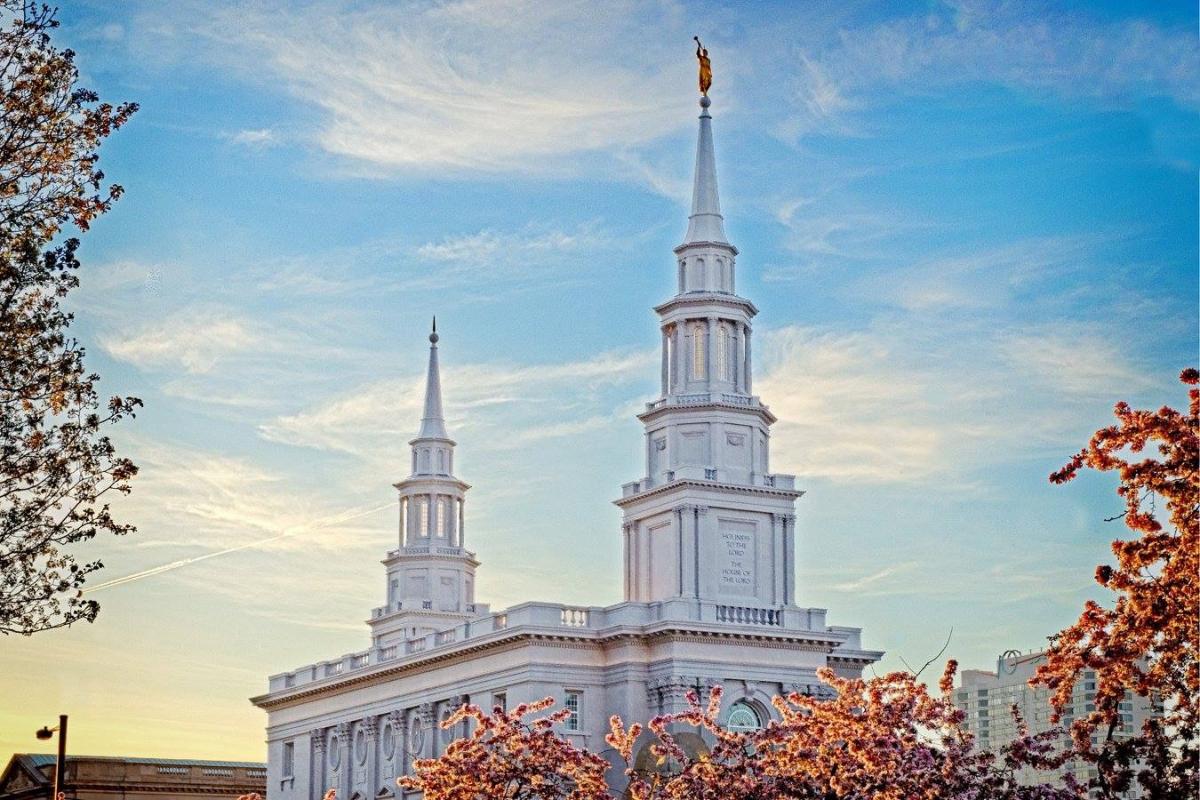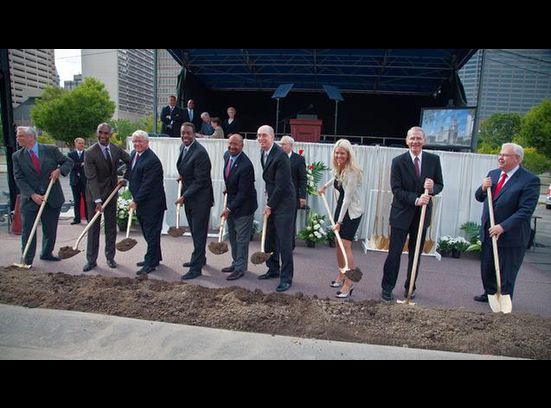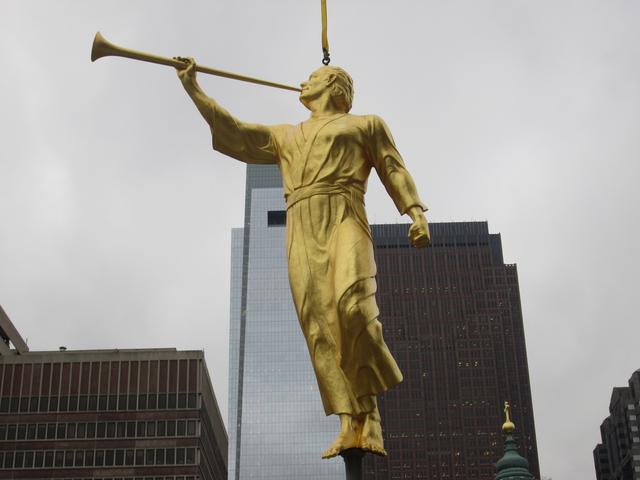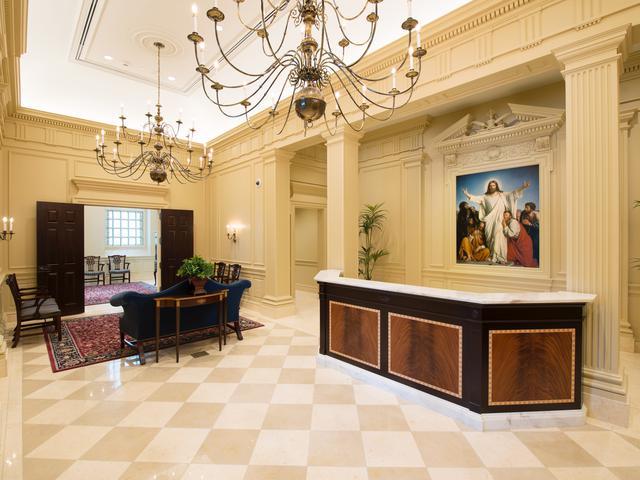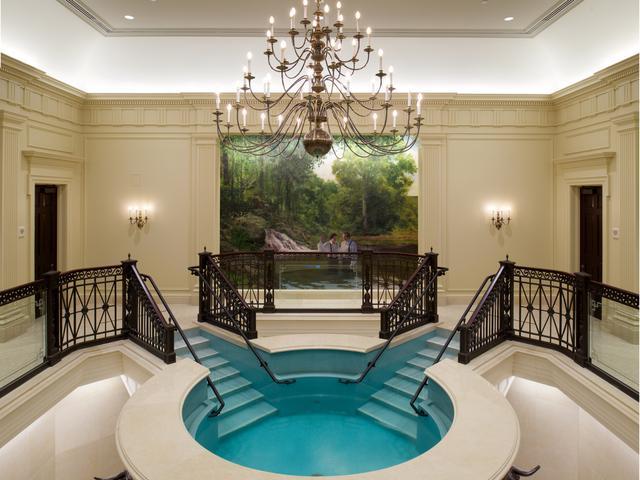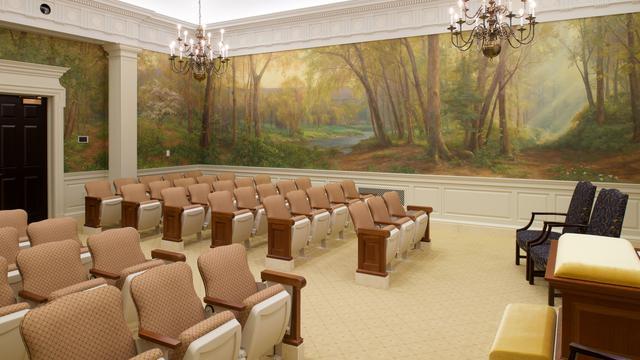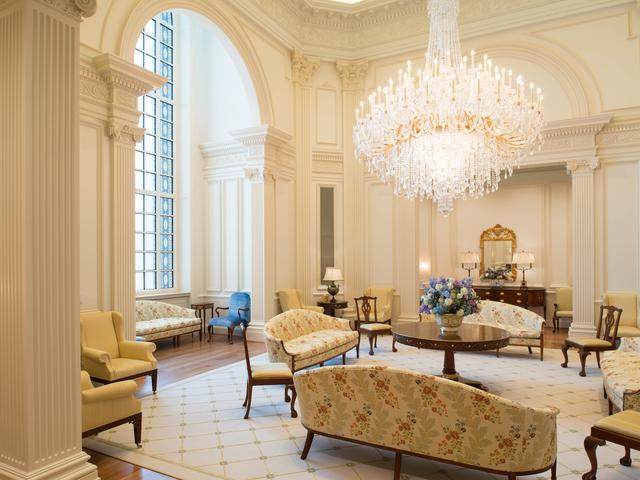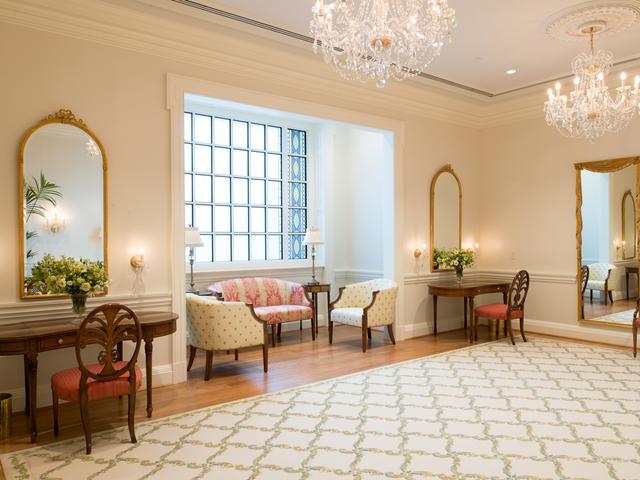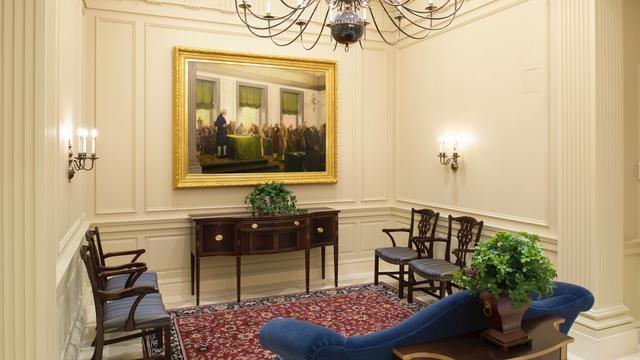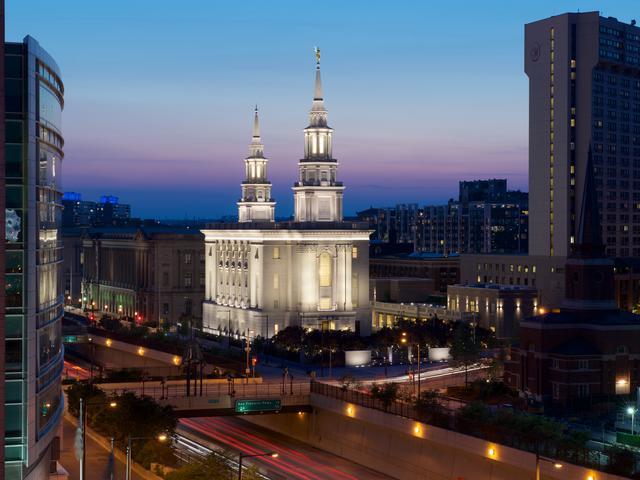Philadelphia Pennsylvania Mormon Temple
It is assumed that The Church of Jesus Christ will build the temple according to the same pattern it has used in large metropolitan areas such as Hong Kong and New York City. Therefore, the new sacred edifice would be a multi-purpose high rise building with offices and a visitors' center on the lower floors, and ordinance rooms on the top floors.
Contents
Significant Events in Mormon Church History in Pennsylvania
Two years prior to the organization of The Church of Jesus Christ of Latter-day Saints in 1830, Church President, Joseph Smith, moved to Harmony, Pennsylvania, and lived in the home of Isaac Hale, his father-in-law. After a few weeks, he moved to a cabin adjacent to the farm. It was in this cabin where Joseph Smith translated most of the Book of Mormon: Another Testament of Jesus Christ - a companion volume of scripture to the Bible. Joseph and the first members of the Church were baptized in the Susquehanna River in May 1829. A total of 12 congregations were organized in Pennsylvania in the 1830s, prior to the gatherings of Saints to Ohio, Missouri, and Illinois. One prominent congregation in Philadelphia had more than 200 members before 1840 and 8 to 10 new members were baptized weekly. Membership fell following the migration of the Saints to the Salt Lake Valley, but grew again as Mormon European emigrants arrived. Eventually the first stake was organized in 1960 with 1,100 members located in congregations in southeastern Pennsylvania, New Jersey, Delaware, and Maryland.
Another significant event in Church history which occurred in Pennsylvania was the restoration of Priesthood authority. On 15 May 1829, having read about baptism for the remission of sins as they worked on the translation of the gold plates, Joseph Smith and his scribe Oliver Cowdery went to a secluded area to inquire of the Lord concerning the matter. There, on the banks of the Susquehanna River near Harmony, Pennsylvania, they received the answer to their prayer. John the Baptist, a resurrected being, came to them as “a messenger from heaven . . . in a cloud of light.” He conferred upon them the Aaronic Priesthood. Then, in obedience to his instructions, Joseph and Oliver baptized each other and ordained each other to the Aaronic Priesthood. Also in May 1829, the ancient Apostles Peter, James, and John conferred the Melchizedek Priesthood upon Joseph Smith and Oliver Cowdery. In June 1829, guided “by the gift and power of God” Doctrine and Covenants 135:3, the Prophet Joseph Smith completed the translation of the Book of Mormon. In 1839, Joseph visited Philadelphia to organize a branch of the Church and speak to a gathering of 3,000 people.
Today there are 51,406 members, 2 missions, 12 stakes, 84 wards, and 30 branches in Pennsylvania alone. The Philadelphia Pennsylvania Temple will be the first temple in the Pennsylvania-New Jersey-Delaware region. The Philadelphia Temple District will include 10 stakes — seven in Pennsylvania, two in Delaware, and one in New Jersey.
Groundbreaking Ceremony
President Henry B. Eyring, First Counselor in the First Presidency, presided over the groundbreaking ceremony for the Philadelphia Pennsylvania Temple on Saturday, 17 September 2011 — the 224th anniversary of the signing of the Constitution of the United States at Philadelphia's Independence Hall. Attendance at the temple site was by invitation only. The event warranted a long story in the Philadelphia Enquirer.
A Symbolic Landmark
In a Friday, 2 October 2015 Deseret Newsarticle, Elder D. Todd Christofferson of the Quorum of the Twelve Apostles stated, "It is in a way symbolic. It's nice to have these two buildings, those key symbols of our faith, the basilica and the temple, side by side almost. I think they complement each other well." The archbishop of Philadelphia, Charles Chaput, who spoke at Brigham Young University (BYU) in 2014, and also during Elder Christofferson's presentation at the World Meeting of Families, commented that Catholics can learn from Mormons about strengthening families. Elder Christofferson further commented, "here are many ways and venues in which we're participating together, and these great buildings side by side say, 'Here we are, together.'"
According to the Deseret News article, the LDS Philadelphia project includes the temple — expected to be complete in 2016, according to published reports — a meetinghouse across the street and a neighboring 32-story residential tower which will have 258 apartments and 13 townhouses, and will also include retail space. "The look of the temple's two towers provides echoes of Independence Hall, the site two miles away where the Founding Fathers signed the Declaration of Independence."
Stake President, Jordan Peterson, a PNC Bank senior vice president who lives in suburban Lansdale, commented, "I've been to the Manhattan Temple many times, and to the Washington D.C. Temple, but Philadelphia is in a really historical and wonderful place. I really believe it's going to be an icon in the city and draw people to it."
Angel Moroni Statue is Put in Place
On 30 December 2015, The Church of Jesus Christ of Latter-day Saints placed an Angel Moroni statue atop the highest spire of its temple in downtown Philadelphia, thus marking a major milestone in the construction of the first Mormon temple in Pennsylvania. An area seventy and senior Church leader for the Philadelphia region, Elder Milan Kunz, commented, "Mormons in our area have been watching for this visible highlight of the construction period. It indicates the temple is nearing completion and it adds a new image to the skyline of the city." He further stated, “Our temples point us to Jesus Christ. These sacred edifices are houses of the Lord and play a key role in strengthening our faith and commitment to follow Jesus Christ and His teachings.”
Moroni is a prophet from the Book of Mormon, which Latter-day Saints consider scripture and a companion to the Bible for study and teaching. The statue of Moroni is not a figure of worship, but rather a symbol of the fullness of the gospel of Jesus Christ.
A Picturesque Tour of the Philadelphia Pennsylvania Temple
The following pictures from LDS Living.com of the inside of the Philadelphia Pennsylvania Temple were officially released by The Church of Jesus Christ of Latter-day Saints on 1 August 2016.
- The Philadelphia Pennsylvania Temple at sunset.jpg
Philadelphia Pennsylvania Temple at sunset
- Instruction room in the Philadelphia Pennsylvania Temple - 2.jpg
An instruction room in the Philadelphia Pennsylvania Temple
- The chandelier in the celestial room of the Philadelphia Pennsylvania Temple.jpg
Chandelier in celestial room of Philadelphia Pennsylvania Temple
- A hallway in the Philadelphia Pennsylvania Temple.jpg
Hallway in the Philadelphia Pennsylvania Temple
Open House and Temple Dedication Announced
The First Presidency of The Church of Jesus Christ of Latter-day Saints has announced that the public is invited to attend an open house for the Philadelphia Pennsylvania Temple starting on Friday, 5 August 2016 to Saturday, 3 September 2016. An open house will not be conducted on Sunday, 7, 14, 21, and 28 August.
A cultural celebration will be held the night before the dedication of the temple on Saturday, 17 September 2016.
The temple will be dedicated as a House of the Lord, and broadcast to all Church meetinghouses in Pennsylvania and those in the Philadelphia Temple district on Sunday, 18 September 2016, in three sessions, 9:00 a.m., 12:00 noon and 3:00 p.m.
Additional Resources
- After dispute, temple site is approved.
- See this website dedicated solely to the Philadelphia Pennsylvania Temple
- LDS Church closes on land purchase for the temple
